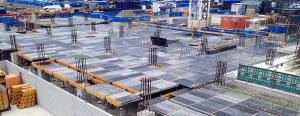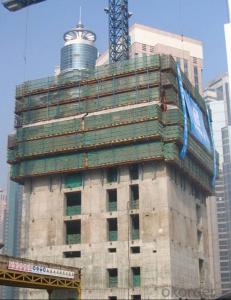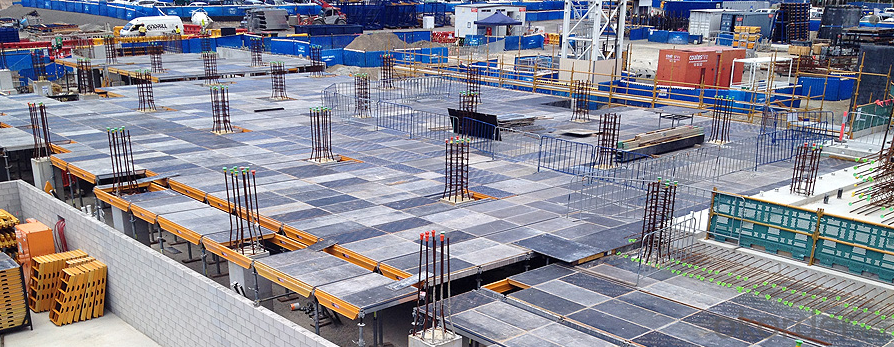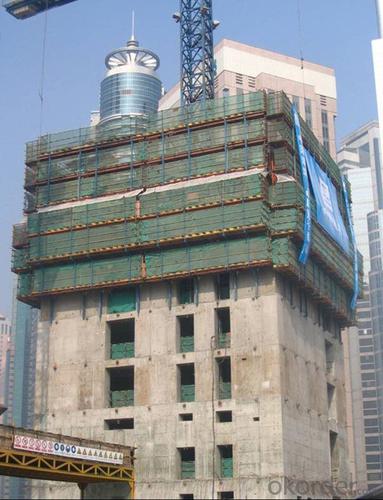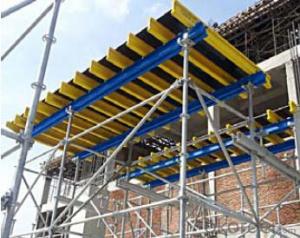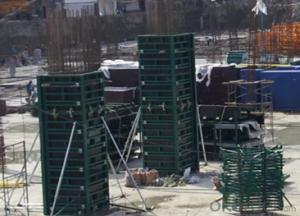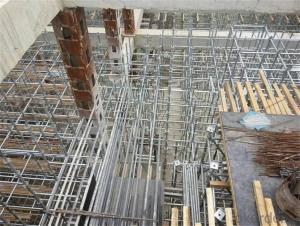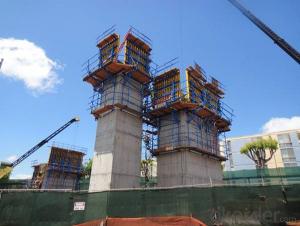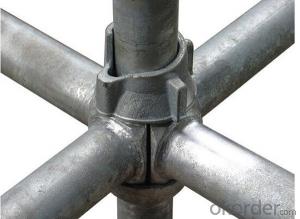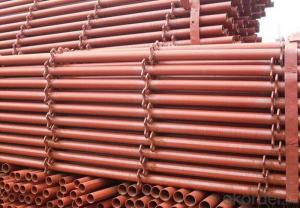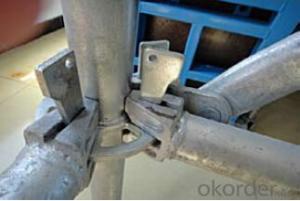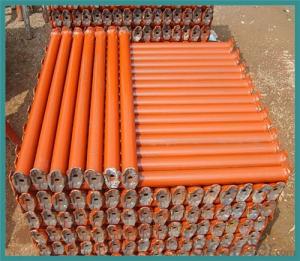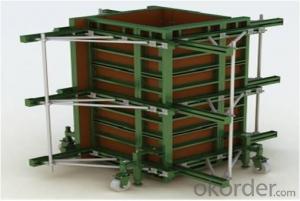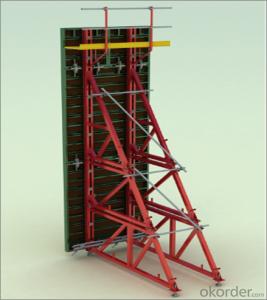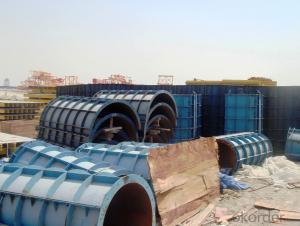Ringlock Scaffolding System Formwork Scaffolding Cover With New Design
- Loading Port:
- Tianjin
- Payment Terms:
- TT OR LC
- Min Order Qty:
- 5000 set
- Supply Capability:
- 50000 set/month
OKorder Service Pledge
OKorder Financial Service
You Might Also Like
Ringlock Scaffolding System Formwork Scaffolding Cover With New Design
Plastic Formwork Concrete Formwork Circular Column Used Scaffolding Props New Design
Developing with new technology materials, steel formworks is no longer a must in construction concrete process. More and more buildings are established with plastic formworks. And workers love this new formworks much more.
The advantages of plastic formworks:
Ringlock Scaffolding System Formwork Scaffolding Cover With New Design
1.First of all--light
Yes it is the first advantage of plastic formwork. It wins the great praise of both contractors and workers.
The biggest panel is 120×1500px,weights 10.5kg only. It can be lift and set up by one person easily, which means there is no need for cranes on site.Saves a lot of cost and time.
2.Easy set up
Different size of panels can firmly locked by simply turn the special handles to 90 degree. The Panels has rib on the back, which makes the system need not traditional wood blocks and nails. The panels have holes to fit tie rod, guarantee the strength of the whole system.
3.Modularity
Modular formworks composed by different size of panels,the main item is 120×1500px panel,which is used for the large area of walls and slabs. There are also small size of panels like 10×1500px,20×1500pxcm,25×1500px,inner corner 20×20×1500px and outer corner 10×5×1500px.Due to the variety of panel size, the system can form almost all size walls 120×1500px panel of multiply by 125px. The material of modular formwork is PC-ABS mixed with special glass fibers which enable panels to hold high pressures.
4.Strength
The handles are made by high strength Nilon, each panel locked by at least 4 handles, which makes the whole system strong enough to pour 1000px walls.
5.Environment friendly
The system needs no cut and nail due to the variety size. Also it needs nearly no wood. The material can be recycled after broken, so it will not pollute the environment.
6.Consequent
Concrete does not stick to plastic formwork, thus the panels need no oil before using, and can be cleaned simply by water. The surface of the wall which build by modular formwork is smooth and without rework.
.Ringlock Scaffolding System Formwork Scaffolding Cover With New Design
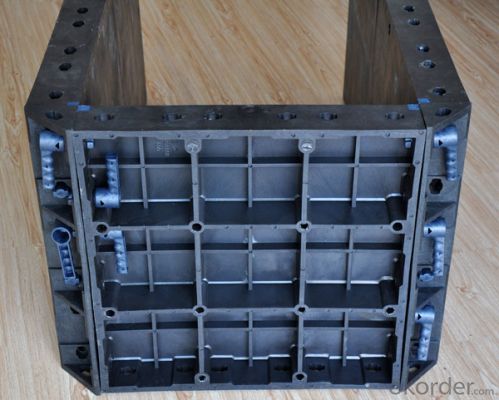
Ringlock Scaffolding System Formwork Scaffolding Cover With New Design
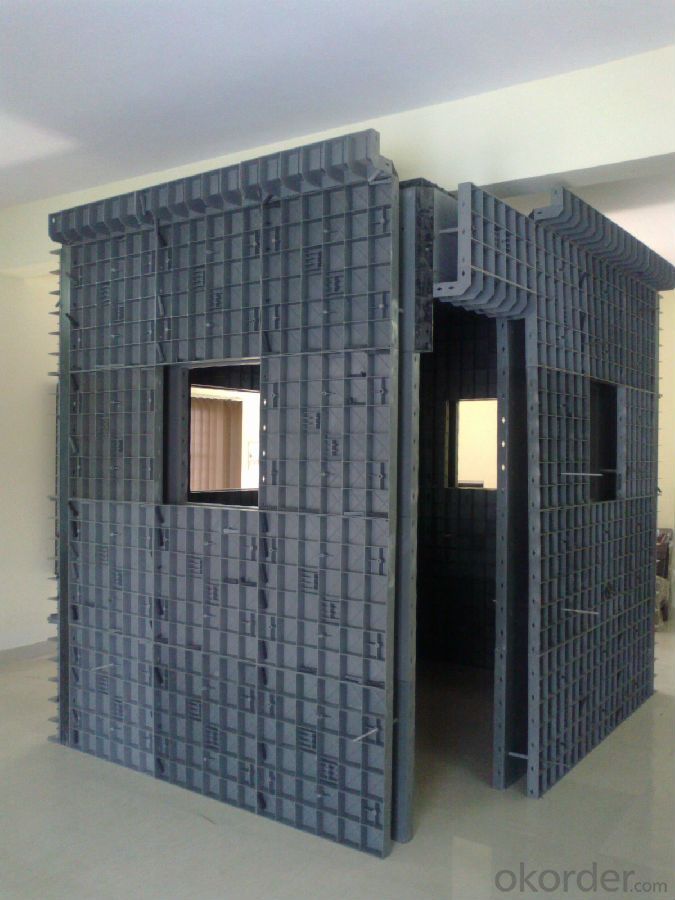
Ringlock Scaffolding System Formwork Scaffolding Cover With New Design
Advantage
* Good loading capacity
* Easy to assemble and dismantle
* Stable and durable thanks to its structual design & automatic welding quality
* Customized solution helps you work safe, save cost and convenient
* Excellent quality for formwork & scaffolding with wide choices
Ringlock Scaffolding System Formwork Scaffolding Cover With New Design
Packing
in bulk or in bundle, or as requested
Shipping
15-20 Days.
Normally small orders, it needs just 15-20 business days to the port. For goods with stock, it would be even shoter.
Ringlock Scaffolding System Formwork Scaffolding Cover With New Design
Other scaffolding & formwork products:
(1) Scaffolding System:
Including Ringlock Scaffolding System and accessories; Cuplock Scaffolding System and accessories; Kwikstage Scaffolding System and accessories; Haki Scaffolding System and accessories;
(2) Scaffolding Frame & Accessories:
Including Walk Through Frame Scaffolding; Ladder Frame Scaffolding; Accessories; we also can make scaffolding according to your samples or drawings.
(3) Scaffolding Couplers/Clamps:
We can produce all kinds of forged and pressed couplers, including British type couplers, American type couplers, German type couplers, Italian type couplers ,fence couplers, BRC coplers and so on. We also can produce according to your drawings or samples.
(4) Formwork System Scaffolding & Accessories:
Light Duty Shoring prop and Heavy Duty Shoring Prop; Wing nuts and Tie rods; RASTO clamp and so on.
FAQ Ringlock Scaffolding System Formwork Scaffolding Cover With New Design
Why Us?
We are one of the Top 500 in the world, largest construction materials supplier in China. Also we are a state-owned company and respond to every customer with large and also small orders.
We own professional manufacturers with powerful producing capacity.
Extensive and comprehensive quality control system
Excellent products with competitive prices.
Efficient services in pre and after sale.
Full energy with affluent experience team.
- Q: How does steel frame formwork handle different types of formwork reinforcement?
- Steel frame formwork is a versatile and robust construction technique that can handle different types of formwork reinforcement effectively. The steel frame provides a sturdy and stable structure that supports the weight of the formwork and the reinforcement materials. When it comes to different types of formwork reinforcement, such as steel bars and mesh, steel frame formwork offers several advantages. Firstly, the steel frame can easily accommodate the placement and positioning of reinforcement materials. The formwork panels are designed with slots and holes that allow for the insertion and secure positioning of steel bars and mesh. Additionally, steel frame formwork can handle different sizes and configurations of reinforcement materials. The flexibility of steel frame formwork allows for the customization of formwork panels to meet the specific requirements of the reinforcement design. This adaptability ensures that the reinforcement materials are properly supported and secured in place during the concrete pouring process. Furthermore, steel frame formwork provides excellent support and stability for the reinforcement materials. The steel frames are designed to withstand the pressure and weight of the concrete, ensuring that the reinforcement remains in position and does not shift or collapse during the pouring and curing process. This stability is crucial for the overall strength and integrity of the reinforced concrete structure. In conclusion, steel frame formwork is well-equipped to handle different types of formwork reinforcement. Its versatility, adaptability, and stability make it an ideal choice for construction projects that require the use of reinforcement materials.
- Q: Can steel frame formwork be used in marine or coastal construction?
- Yes, steel frame formwork can be used in marine or coastal construction. Steel is a durable and corrosion-resistant material that can withstand the harsh conditions present in marine environments. It provides the necessary strength and stability for concrete structures in coastal areas, making it a suitable choice for formwork.
- Q: How does steel frame formwork help in reducing concrete segregation?
- Steel frame formwork helps in reducing concrete segregation in several ways. Firstly, the steel frame provides a rigid structure that holds the formwork in place, preventing any movement or deformation during the pouring and curing process. This stability ensures that the concrete remains evenly distributed and does not separate into its constituent components. Secondly, the steel frame formwork is designed with proper reinforcement and bracing, which helps to maintain the shape and integrity of the formwork. This prevents any bulging or deformation of the formwork, which could lead to uneven pouring and subsequent segregation of the concrete. Additionally, the steel frame formwork allows for precise control over the pouring process. The formwork system can be designed with various features such as adjustable height, width, and depth, allowing for accurate placement of the concrete. This precise control ensures that the concrete is evenly spread and compacted, reducing the chances of segregation. Furthermore, steel frame formwork provides a smooth and even surface for the concrete to be poured onto. This prevents any obstructions or irregularities that could cause the concrete to separate or segregate. The smooth surface also allows for better compaction of the concrete, further reducing the risk of segregation. Overall, the use of steel frame formwork helps in reducing concrete segregation by providing a stable and rigid structure, precise control over the pouring process, and a smooth surface for the concrete to be poured onto. These factors contribute to a more uniform and homogeneous concrete mixture, resulting in a higher quality and more durable construction.
- Q: Can steel frame formwork be used for curved or irregular shaped structures?
- Yes, steel frame formwork can be used for curved or irregular shaped structures. Its flexibility and strength allow for the creation of customized formwork that can be easily adjusted to match the desired shape of the structure. This makes steel frame formwork a suitable choice for challenging architectural designs that require curved or irregular shapes.
- Q: Can steel frame formwork be used in projects with high traffic or heavy loads?
- Yes, steel frame formwork can certainly be used in projects with high traffic or heavy loads. Steel frame formwork is known for its durability, strength, and stability, making it a reliable choice for such projects. Its robust construction allows it to withstand heavy loads and frequent use without compromising its structural integrity. Additionally, steel frame formwork provides excellent support and stability, ensuring safety for both workers and the structure itself. Its ability to handle high traffic or heavy loads makes it a popular choice in various construction projects, including bridges, high-rise buildings, and infrastructure projects.
- Q: How does steel frame formwork handle the placement of concrete in congested areas or tight spaces?
- Steel frame formwork is specifically designed to handle the placement of concrete in congested areas or tight spaces effectively. Its flexible and modular nature allows for easy customization and adaptation to fit any challenging construction site. Additionally, the steel frame formwork provides a sturdy and stable structure that can withstand the pressure exerted by the concrete, ensuring the integrity of the formwork system during the pouring process. The compact design of steel frame formwork also allows for efficient utilization of space, making it an ideal choice for congested areas or tight spaces where traditional formwork systems may not be feasible.
- Q: What are the main components of a steel frame formwork system?
- The steel frame formwork system is comprised of several key components. Firstly, the primary components are the steel frames which offer the necessary structural support and stability for the construction process. Constructed from high-quality steel, these frames are designed to withstand the weight and pressure of the poured concrete. Secondly, the steel frames are equipped with panels, typically made from durable materials such as plywood. These panels serve as the surface onto which the concrete is poured, providing the desired shape and finish to the structure. What's more, the panels can be easily removed and reused for multiple projects, making them a cost-effective choice. Next, adjustable props are utilized to support the steel frame formwork system and ensure its stability during the concrete pouring phase. These props can be adjusted to the desired height, offering flexibility when constructing structures of varying dimensions. Made from high-grade steel, these props are capable of withstanding heavy loads. In addition, tie rods are employed to hold the formwork system together and maintain its shape during the concrete pouring process. These rods are threaded and passed through holes in the panels, allowing for easy tightening or loosening as required. By providing extra strength and stability, the tie rods ensure that the formwork system maintains its shape until the concrete has fully cured. Lastly, wedges and clamps are used to securely fasten the panels to the steel frames, preventing any movement during the concrete pouring process. The wedges are inserted into slots on the frames and can be easily adjusted for a snug fit. Clamps are used to tightly secure the panels together, resulting in a solid and seamless formwork system. In summary, a steel frame formwork system consists of steel frames, panels, adjustable props, tie rods, wedges, and clamps. These components work in harmony to provide a robust and dependable solution for efficiently constructing various concrete structures.
- Q: Can steel frame formwork be used for both precast and cast-in-place concrete walls?
- Yes, steel frame formwork can be used for both precast and cast-in-place concrete walls. Steel frame formwork is a versatile and durable system that can be easily assembled and disassembled, making it suitable for various construction processes. For precast concrete walls, the steel frame formwork can be used to create the mold or form for the concrete panel, which is then cast and cured off-site before being transported and installed. In the case of cast-in-place concrete walls, the steel frame formwork is used on-site to create the formwork for the concrete wall, which is poured and cured in place. This flexibility of steel frame formwork allows it to be used in both precast and cast-in-place applications, providing efficient and reliable results for different construction needs.
- Q: How does steel frame formwork handle extreme weather conditions?
- Steel frame formwork demonstrates exceptional durability and can endure the most severe weather conditions. Its robust and steadfast structure guarantees its integrity, even in the face of inclement weather such as heavy rainfall, strong gusts, or extreme temperatures. A primary benefit of utilizing steel frame formwork lies in its resistance to corrosion. Steel, as a material, possesses an inherent resistance to rust, rendering it ideal for construction undertakings in regions characterized by high humidity or regular exposure to water. This resistance to corrosion ensures that the formwork remains structurally sound and maintains its integrity, even when confronted with adverse weather conditions. Additionally, steel frame formwork is designed to offer exceptional stability and load-bearing capacity. Consequently, it can endure high wind velocities without succumbing to damage or deformation. The robust nature of the steel frame formwork ensures that it can withstand extreme weather conditions without compromising the safety of the construction site. Furthermore, steel frame formwork is frequently designed with a protective finish or coating that further heightens its resistance to weather elements. This protective layer provides supplementary safeguards against moisture, UV rays, and other environmental factors, thereby prolonging the lifespan of the formwork and guaranteeing its durability in the face of extreme weather conditions. In conclusion, steel frame formwork proves to be an outstanding choice for construction ventures situated in areas prone to severe weather conditions. Its resistance to corrosion, stability, and protective finishes establish it as a dependable and long-lasting solution, capable of effortlessly handling even the most challenging weather conditions.
- Q: How does steel frame formwork support the weight of concrete?
- The weight of concrete is supported by the robust and rigid structure of the steel frame formwork. To withstand the vertical and horizontal loads exerted during pouring and curing, the steel frame is designed accordingly. Comprising securely connected steel beams and columns, the formwork system forms a stable framework. Acting as a temporary mold, it offers the necessary shape and support during construction. The steel beams and columns are engineered with ample strength and stiffness, preventing any deformation or collapse under the concrete's weight. Typically made from high-quality steel, they possess excellent load-bearing capacity and durability. To ensure stability and proper alignment during concrete pouring, the steel framework is often supported by adjustable props or scaffolding. By adjusting the props to the desired height, the formwork can be leveled and plumbed, ensuring accurate and even pouring. Moreover, the steel formwork is designed with sufficient bracing and tie systems to resist any lateral or horizontal forces from the fluid concrete. These bracings and ties help evenly distribute the load across the formwork, avoiding any localized concentration of weight that could lead to failure. In conclusion, the steel frame formwork system provides a strong and dependable support structure for concrete's weight. Its sturdy design, high-quality materials, and correct installation guarantee its ability to withstand the loads imposed by the concrete, resulting in a safe and successful construction process.
Send your message to us
Ringlock Scaffolding System Formwork Scaffolding Cover With New Design
- Loading Port:
- Tianjin
- Payment Terms:
- TT OR LC
- Min Order Qty:
- 5000 set
- Supply Capability:
- 50000 set/month
OKorder Service Pledge
OKorder Financial Service
Similar products
Hot products
Hot Searches
